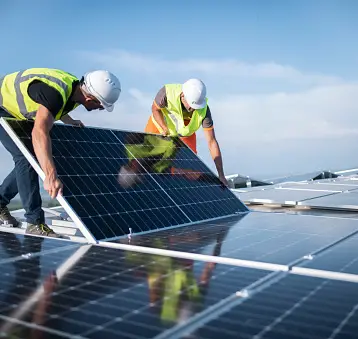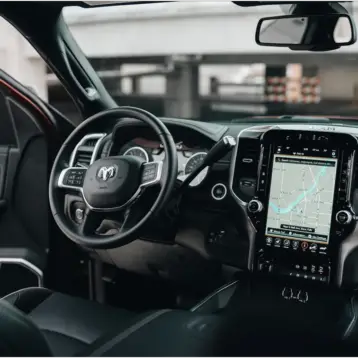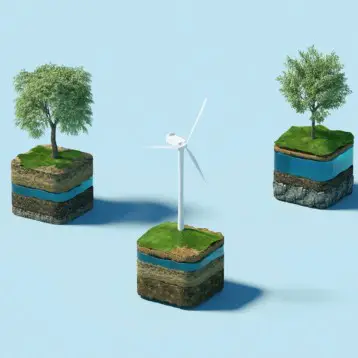
In our rapidly changing world, where climate change and environmental challenges demand immediate action, satellite imagery emerges as the planet’s mirror. From tracking deforestation in the Amazon to mapping pollution over sprawling urban landscapes, these high-tech tools deliver real-time insights with remarkable accuracy. Leveraging platforms that provide recent satellite images, decision-makers can move beyond guesswork, crafting strategies rooted in clear, actionable intelligence. In this article, we explore how space imagery transforms environmental monitoring from a reactive chore to a proactive necessity.
Understanding the Role of Satellite Imagery in Environmental Monitoring
Satellite imagery has become the leading tool for monitoring Earth’s environment, revealing dynamic changes across the planet. These high-resolution images can be found in any public or commercial satellite images catalogue and provide essential data for researchers tracking phenomena from the rapid decline of glaciers to illegal deforestation in tropical areas with impressive accuracy.
NASA’s Earth Science division highlights how satellite data enhances environmental monitoring, offering a broader perspective than traditional methods reliant on manual data collection. In challenging areas like the Arctic, satellites effectively monitor melting ice and rising sea levels.
A key advantage of space imagery is its ability to track changes over time, allowing scientists to identify trends such as urban sprawl and deforestation. This process is akin to viewing a before-and-after album of Earth, albeit with far graver implications.
Additionally, resources like NASA Earth Observatory make this information accessible to the public, transforming raw data into engaging visuals that raise awareness and inspire action. Ultimately, satellites not only observe but also empower us to act, providing a cosmic perspective that reinforces our commitment to environmental stewardship. Let’s look at how real-time satellite view helps protect the planet.
How Real-Time Satellite Data Impacts Environmental Protection
Real-time satellite data has transformed environmental protection by enabling rapid responses to issues like wildfires, floods, and pollution. Satellites like Sentinel-2, managed by the European Space Agency, identify hotspots and track changes, aiding emergency teams in assessing wildfire spread and flood damage, even in remote areas.
Satellites such as Copernicus Sentinel-5P monitor air pollution, providing crucial information on harmful substances and helping governments identify pollution sources and predict air quality issues. They were vital in tracking methane leaks, potent greenhouse gases.
Beyond immediate crises, ongoing satellite data helps policymakers evaluate the effectiveness of environmental regulations and ensure compliance with climate goals. In a world of unpredictable environmental threats, current satellite imagery acts as a vigilant protector, facilitating informed decisions and proactive conservation efforts. Let’s investigate how satellites contribute to tracking deforestation.
Tracking Deforestation with Satellite Imagery
Space images are vital for monitoring deforestation, offering a comprehensive satellite view of the Earth that ground teams cannot match. Supported by the World Resources Institute (WRI), satellite data enables precise tracking of forest cover changes, revealing illegal logging and harmful activities.
For instance, in the Amazon rainforest, satellites can quickly detect tree cover loss, pinpointing illegal logging operations hidden within the foliage. WRI’s Global Forest Watch makes this data accessible to governments, NGOs, and the public.
Real-time monitoring allows local officials to respond swiftly to sudden increases in forest loss, helping to prevent further damage. Countries like Brazil and Indonesia are leveraging this technology to combat illegal logging, showcasing its potential for proactive action.
Additionally, satellite data is crucial for monitoring reforestation efforts, ensuring that new trees are successfully growing. It acts as a “green growth tracker,” holding the world accountable for restoring lost forests.
In the fight against deforestation, space imagery is not just a tool but a vital support system for forests and the species, including humans, that depend on them. This technology is essential for protecting our natural environment. Now, let’s look at how satellite images assist in tracking climate change and pollution.
Satellite Imagery in Monitoring Pollution and Climate Change
Up-to-date satellite images are essential for tracking pollution and climate change, providing real-time environmental data. They help us monitor air quality, ocean conditions, and atmospheric changes, offering critical insights for addressing ecological issues.
For example, NASA’s Sentinel-5P satellite detects pollutants like nitrogen dioxide and carbon monoxide, revealing significant air quality improvements during the 2020 lockdowns. This information helps governments enforce regulations and informs communities about air quality risks.
Satellites also identify marine pollution, such as oil spills and plastic debris, using radar to detect oil slicks even in cloudy weather, enabling faster response efforts. They track climate change indicators like rising sea levels and ice melt, aiding policymakers in developing effective strategies.
In summary, satellites act as the Earth’s “health monitor,” continuously assessing its condition and influencing climate agreements and local initiatives, enhancing our understanding of environmental decline. This leads to better eco-activities and policies. Let’s discover more about it.
Leveraging Satellite Technology for Better Policy and Action
Space technology is crucial for policy-making, offering real-time environmental data that helps governments and organizations address issues effectively. For instance, the United Nations Environment Programme (UNEP) utilizes satellite data for improved environmental strategies.
Satellites identify conservation areas by tracking endangered species and monitoring deforestation, aiding decision-making. They also enhance agriculture by assessing crop health and water use, while tracking urban sprawl for balanced development.
Moreover, space technology fosters global collaboration by sharing data, enabling countries to collectively tackle challenges like climate change, leading to agreements such as the Paris Climate Accord. Ultimately, it serves as an impartial, data-driven tool in global policy, ensuring critical environmental issues are addressed.
In summary, a live satellite view is crucial for modern environmental monitoring, facilitating proactive conservation and resource management. It offers real-time data for swift responses to challenges like deforestation, pollution, and climate change. Advances in space technology enhance the tracking of environmental changes, aiding informed decision-making and long-term planning. As environmental issues escalate, satellite technology is vital for a sustainable future.










